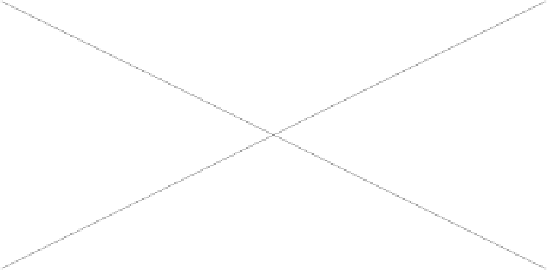Environmental Engineering Reference
In-Depth Information
A coil geometry and support structure was chosen that met the criteria to con-
trol the mechanical forces, while minimising the fl ux density in the HTS wire,
taking into account the anisotropic characteristics of the wire. Converteam has
been supported by its superconducting partner Zenergy Power in develop the
coil manufacturing process.
6.4.3 Wind turbulence
Wind does not blow at a constant speed, so a wind turbine is subjected to con-
stantly changing wind speeds and load. The amount of turbulence is dependant on
the site location and the wake effects from other turbines, with background turbu-
lence much higher onshore than offshore. This results in a wind turbine generator
being subjected to constantly changing speed and torque, which can induce eddy
currents in the electrically conducting cold components, creating losses and hence
unwanted heating of the cold parts. It can also result in fl uctuating fl ux density at
the HTS coils, causing AC loss in the superconductor.
A simulation was carried out on the conceptual design using a level of wind
turbulence at the high end of what may be expected for an offshore location, as
shown in Fig. 13.
A two-dimensional non-linear time stepping electromagnetic fi nite element
(FE) simulation was carried out over a simulated time period of 10 min using Vec-
tor Fields Opera software. The model included an external circuit (outside of the
FE mesh) which was continually varied to simulate the turbine control system. The
solution was post processed to obtain eddy current loss in individual rotor parts
and fl ux density variation in the HTS coil. The simulation included the effect con-
tinuous blade pitch control in the turbine to attempt to maintain the power supplied
to the grid constant whenever possible, allowing the generator speed and torque to
vary. A similar control method is described in [35]. The simulation also included
blade pitch control compensating for the periodic torque variations due to wind
Typical Wind Turbulence
40
35
30
25
20
15
10
5
0
0
100
200
300
400
500
600
time (s)
Figure 13 : Wind velocity.

Search WWH ::

Custom Search